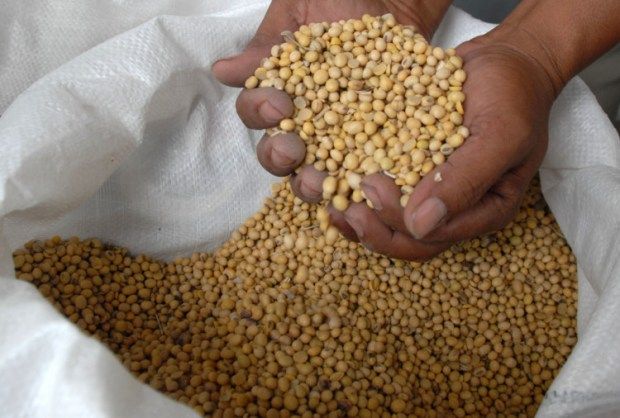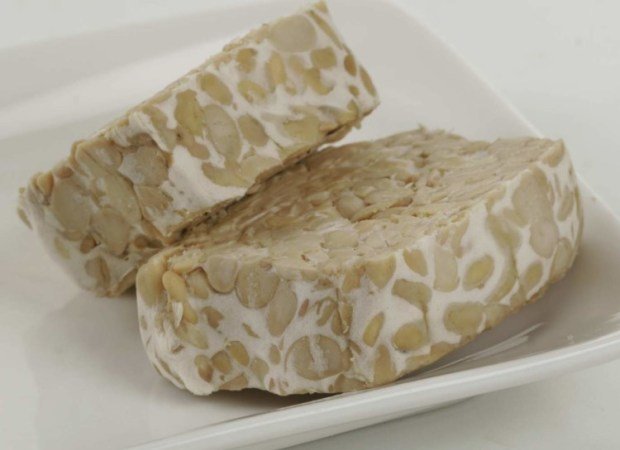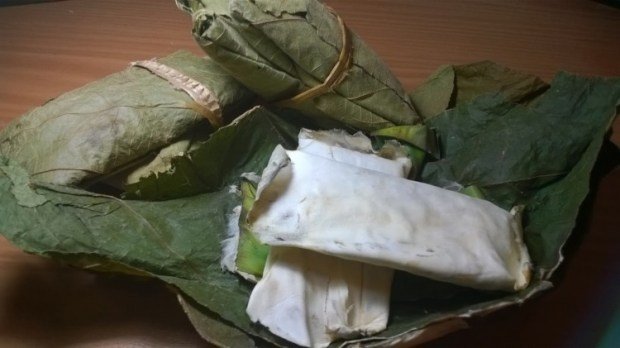How to Make Tempe Easy and Delicious
Tempe is a traditional food that is a lot of soybean. Traditional food, but this tempe includes imported food you know. How not import, right who made to make tempe from abroad.
Not just in Indonesia aja lho tempe is famous, even to abroad everything. Tempe has a fairly high nutritional content and can be processed into a variety of food products.
Tempe is also a food that the ingredients do not use animal, so it can be consumed by a vegetarian.
Make tempe is not difficult anyway, just need perseverance with will. If you want to make tempe, we learn together aja yuk how to make your own tempeh.
Tempe Maker Tool.
- The basin.
- The sight.
- Sieve.
- Stove.
- Potter.
- Fan.
- Sotel wood.
Material Make Tempe.

- Soybeans.
- Yeast tempeh.
- Banana or plastic leaf.
How to Make Tempe.

Making tempe requires several times the experiment to produce a really good tempe. So when you fail once, do not give up and try experimenting again.
Soy Wash.
The first process is to wash soy so that dirt contained in between soybeans can be lost. This is very necessary because it will greatly affect the resulting tempe.
If the soybean used is clean, then the quality of the resulting tempe will be good. But, when there is dirt, whether it is twigs or pebbles, surely this will affect the quality of the resulting tempe.
Soaking Soybeans.

After the soybean is clean from the dirt, the next step is soaking the soybeans. Soaking is intended to select soy with good quality. If the soybean floats, then the soybean quality is not good, and better removed.
In addition, soaking will also facilitate the exfoliation of soybean shell if you use soybeans that still have its epidermis.
This soaking is usually done during the night, so that the water actually gets into soybeans and soybeans becomes softer.
Anxiety And Wash Back.
After soaking, you have to squeeze soybeans so the peel can peel off. After that do the separation between soybean with its epidermis.
Then wash the soybeans back and make sure that no epidermis and other impurities are still present among the soybeans to be processed.
Boiling Soybeans.
Soybeans are clean from the epidermis and dirt, then put into a pan for boiling. Use a pot or container with the size of the amount of soybeans you will be using.
When boiling soybeans, you should use clean water. This is intended so that the fermentation process will not be disturbed.
This boiling process takes a long time to fully mature. All that is influenced also from how much you process the soy.
Soybean Cooling.
After boiling until cooked, the next step is to remove steam and cool the soybean.
Use a container with a width and spread over the surface of the vessel. You can also use the fan so that the soybeans quickly disappear steam and become cold.
Fries.
The most important process in making tempe is fermentation. Because, in this process will determine the success or failure of making tempe that we do.
The ferment should only be done when the soy is completely dry and the steam heat is gone. Do not sprinkle the yeast when the soybean is still very hot because it will kill the microorganisms in the yeast.
Giving yeast also can not be arbitrary, usually for 2 kg of processed soybeans, you need about 2 tablespoons of tempe yeast.
Sprinkle yeast over the surface of soybeans and flatten until all the soybeans are really exposed to yeast tempeh.
Wrapping.
After the soybeans are given yeast, then we will wrap it up or it can also be printed with a prescribed shape.
The packaging that you can use in making tempe is various. You can use banana leaves, teak leaves, or clear plastic.
The way is easy enough, you just put the soy into the wrapper. Good wrapping is actually a banana leaf, but, if you use plastic, preferably with a plastic hole by using a spoon with a stick or toothpick.
The purpose of hollowing if you use a plastic wrap is to tempe yeast to get a little air. But, do not give too much hole on the plastic yes, for the resulting tempe to be white clean and tasty.
Fermentation.
After all the soybeans are put into the wrapper, leave this unfinished tempe at room temperature. If you want the fermentation process to run more effectively, place the tempe at a slightly warm temperature for approximately 24 hours.
Do not overlap tempe, because when the process of fermentation, tempe will release heat. If stacked in large quantities, tempeh will overheat and will become quickly cooked.
End Process.
After silenced for approximately 24 hours, it's time you see whether the tempe is overgrown with white fluff or not. If it is, that means tempe can you be a delicious cooking.
Well, that was how to make tempe that you can do at home. Now we see tips on how to make tempeh, so the results have a good quality.
If the above process is as a whole and with many explanations. Here is a simple step that you can do to create tempe.
Steps to Make a Quick Tempe.
- First soak the soybean dry until fluffy.
- After boiling soybeans until boiling, when boiling, let stand for a few minutes.
- If it is boiling, chill the soybeans, then knead soybeans to remove the epidermis.
- Boil back the soybeans and add vinegar to eat just a little.
- When it is boiling, turn off the fire and drain soybeans until dry.
- Put on top plus so that the water vapor immediately disappears.
- After a little cold, add yeast tempe and flatten.
- Enter the soybeans that have been given yeast into the container, can be banana leaf or clear plastic.
- If using plastic, hole a little needle.
- Save the tempe in a clean place and cover it with paper.
- If the tempe is already sweating, open the cover paper.
- Let stand until the tempe is completely covered with white color perfectly, approximately for one day.
- Tempe is ready to be processed.
Tips & Tricks to Make Tempe.

- Choose a good quality soybean root of the tempe is also good.
- As much as possible soybeans are not mixed with other grains such as corn, green beans or other grains.
- When washing try all the dirt like twigs and branches have been thrown away.
- This is so that the tempe produced there is no dirt that can interfere with the quality of tempeh.
- Note the workplace and equipment used, keep everything in a clean condition so that tempe is not contaminated by contaminants from outside.
- In addition to using banana leaves, tempeh can be wrapped with plastic.
- But the best result is if we use a banana leaf.
- The warmer air temperature will accelerate the process of fermentation so that tempe will be faster so.
Well, that was a simple way to make tempe that you can practice at home. Do not just read aja ya, but practiced as well. Do not say it's hard before trying.
Good luck trying to make your own tempe, besides safer because homemade, there must be a sense of pride also tuh can make tempe for family or close relatives.
Thank you for contributing your knowledge to help others! This post has been added to the Sotall.org Directory of Self Sufficiency & Survival posts. One of our goals is to provide access to the knowledge of our fellow Steamians, that will still be seen, long after the 7 day period is passed. If you write any future articles with instructions on how to do any tasks related to a homestead or survival, to ensure they are added to the directory, please submit them. They will be added as soon as possible.